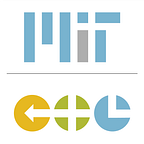Switching Rules for Optimal Ordering in a CPG company
By: Shilpa Shenoy and Ai Zhao · March 20, 2020 · First published by Supply Chain Management Review.
Large multinational CPG companies have thousands of products, each with their own production plan. The demand for these products is highly volatile and subject to unpredictable spikes due to promotions set by the retailers. Producing sufficient quantities of the product is vital to the company’s revenue.
The company needs to store sufficient raw material inventory to ensure continuity of production, while at the same time avoiding excess inventory. Because the retail stores are the customers, there is no data on the end customer’s demand at the point of sale. How does the company know how much to order?
We developed a model to optimize the raw material ordering policy in a way that reduces the total costs while storing sufficient raw materials to avoid stock-outs.
Maintain the balance between cost and service level
For the product in consideration, raw material suppliers offer incremental discounts for ordering larger quantities. However, since the demand is highly volatile, the company cannot leverage this discount and order one month’s worth of demand each time. The total cost influences the ordering cost and holding cost, which are dependent on the quantity ordered.
In addition to cost, the second critical factor to consider is the service level. What if a CPG company has a product that has a high-profit-margin? They want to sell as much as possible, avoid stock-outs and have a service level close to 100%. The question is: how to maintain the balance between costly oversupply and equally costly lack of goods?
The model we developed takes into account both the cost and service level, and gives an ordering policy for the company to follow. The model adopts a distribution requirement planning (DRP) system to create an optimized production plan. By considering the gross production requirement over the lead time, the model will provide the optimal minimum order quantity (MOQ) to use while re-ordering raw materials.
Hit the sweet spot between ordering and holding cost
With the quantity discounts provided by the suppliers, the ordering cost declines when larger quantities are ordered, while the holding cost increases with larger orders, as they need to be stored. Our model hits the sweet spot between these two costs to find the optimal order quantity. In a product that has high demand volatility, having one large MOQ throughout the year can lead to overstocking and holding too much inventory at certain times of the year when the demand is very low.
With a switching rule, the general policy is that, if the demand forecast is very high, the company uses a higher MOQ, whereas if the demand forecast is very low, then it would switch to a lower MOQ. With this switching rule, the company can reduce the average inventory held at the production facility and reduce the overall cost.
This model can be used by CPG companies in determining the optimal MOQ values for the re-order quantity that give the lowest cost and achieve the target service level, for a variety of products. The switching rules can be used for products with highly volatile and unpredictable demand. The model provides a base policy without switching. There are five switching rules to choose from, which determine when to switch to a lower or higher MOQ, as well as the optimal values of the MOQs that achieve the target service level at the lowest cost.
The SCM research project Switching Rules for Optimal Ordering was authored by Shilpa Shenoy and Ai Zhao and supervised by Dr. Marina G. Mattos. For more information on the research please contact Josué Velázquez, Executive Director, Masters of Supply Chain Management, at josuevm@mit.edu
